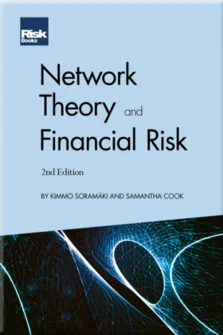Financial stability and systemic risk
Preface
Acknowledgements
An introduction to financial networks
Creating and describing networks
Identifying important nodes: Centrality metrics
Uncovering latent structure: Clustering and community detection
Finding hidden links: Projection networks
Estimating unknown links: Network reconstruction
Fast insights: Visualising networks
Financial cartography: Network layouts
Brass tacks: Complexity reduction
Financial stability and systemic risk
Design and simulation of financial market infrastructures
Monitoring and stress testing financial market infrastructures
Financial crime and conduct risk
Financial markets
References
Historically, regulatory structures and policy initiatives evolved to address problems, often as a consequence of crises or a failure of a prominent institution. The end of the 20th century was characterised by deregulation, globalisation, innovation and consolidation of the financial industry. Generally, the regulation of financial institutions and markets is organised based on the type of financial services provided and the products offered to clients. Thus, regulatory oversight of the financial industry is often fragmented, especially in developed economies. Banks, insurance and investment companies were not, and are still not, regulated by the same agencies in most countries. As an example, Figure 10.1 illustrates the complexity of US financial regulations. Large financial institutions are often regulated by multiple agencies.
The global financial crisis of 2007–08 highlighted the inadequacy of product-based regulatory silos to oversee and identify problems in the global financial system. As the crisis unfolded, the leaders of the G20 nations united in their efforts to enact consistent policies across jurisdictions to identify accumulation of systemic risk and thus improve
Copyright Infopro Digital Limited. All rights reserved.
As outlined in our terms and conditions, https://www.infopro-digital.com/terms-and-conditions/subscriptions/ (point 2.4), printing is limited to a single copy.
If you would like to purchase additional rights please email info@risk.net
Copyright Infopro Digital Limited. All rights reserved.
You may share this content using our article tools. As outlined in our terms and conditions, https://www.infopro-digital.com/terms-and-conditions/subscriptions/ (clause 2.4), an Authorised User may only make one copy of the materials for their own personal use. You must also comply with the restrictions in clause 2.5.
If you would like to purchase additional rights please email info@risk.net











